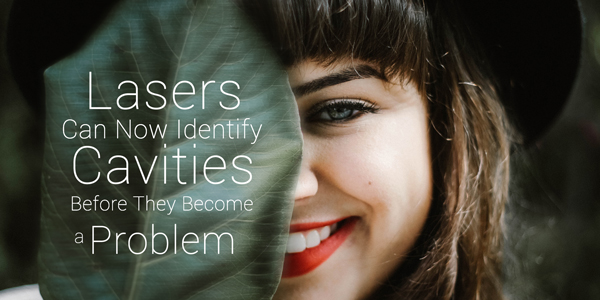
Although dentistry is always evolving and at the forefront of medical technology, some diagnosing and treatment methods have changed very little over time. One such method is the detection of dental caries, the proper name for cavities. Cavities are traditionally detected by one of two ways: visual inspection or x-rays. Holes and Pits on the biting surfaces and vertical walls of teeth can be detected visually or manually, using a sharp instrument to identify soft areas on enamel; cavities between teeth are typically caught on dental x-rays. While both of these methods are reliable and effective, they don’t detect cavities until they are well developed.
This is where lasers enter the picture. In recent years, dental lasers have been developed that can transilluminate (“shine through”) teeth and show areas of decay. When shined on a tooth, areas of decay show fluorescence, making their presence nearly unmistakable when using this technique.
By using lasers to detect cavities, dentists can detect cavities much sooner than with x-rays or visual inspection. Earlier diagnosis means smaller fillings or perhaps even more conservative treatment, such as dental sealants or remineralization of weakened areas. Laser cavity detection is also quick and comfortable, as opposed to x-rays, which take time and might be uncomfortable for some patients. While laser cavity detection is not a replacement for dental x-rays, used in conjunction with x-rays, it also reduces the exposure to radiation.
With the use of lasers to aid in cavity detection, your dentist can now make diagnoses that are faster, more accurate, and result in more favorable treatments.
